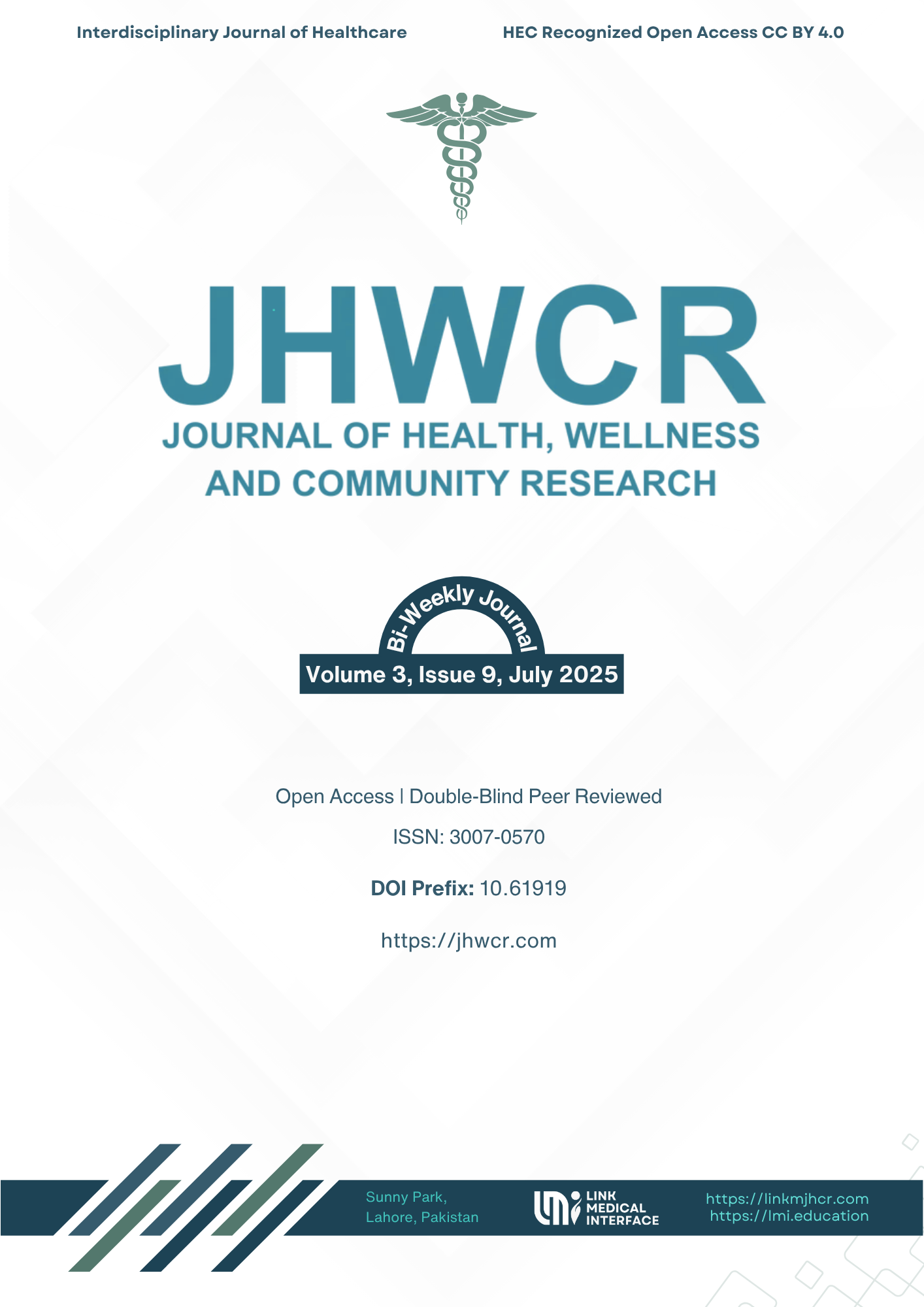Effects of Mulligan Mobilization with and without Clamshell Exercise on Joint Mobility, Muscle Strength, and Psychological Well-Being in Patients with Temporomandibular Joint Dysfunction (TMD)
DOI:
https://doi.org/10.61919/jqfrdk65Keywords:
temporomandibular joint dysfunction, Mulligan mobilization, Clamshell exercise, joint mobility, muscle strength, psychological well-being, randomized controlled trialAbstract
Background: Temporomandibular joint dysfunction (TMD) is a prevalent musculoskeletal condition characterized by pain, restricted jaw mobility, and impaired psychological well-being, significantly affecting quality of life. While Mulligan mobilization is an established manual therapy technique for improving joint function, its efficacy in isolation may be limited. The addition of targeted exercise such as the Clamshell, traditionally used for hip stabilization, may offer synergistic benefits but remains underexplored in TMD populations. Objective: To evaluate the comparative effects of Mulligan mobilization with and without Clamshell exercise on joint mobility, jaw muscle strength, and psychological well-being in adults with TMD. Methods: This single center randomized controlled trial enrolled 60 participants with clinically diagnosed TMD. Participants were randomized into two groups receiving either Mulligan mobilization combined with Clamshell exercise or Mulligan mobilization alone, delivered twice weekly over 8 weeks. Primary outcomes included temporomandibular joint mobility (degrees), jaw muscle strength (kg), and psychological well-being measured using the DASS-21, assessed at baseline and post-intervention by blinded evaluators. Statistical analysis was performed using repeated-measures ANOVA with adjustment for baseline differences. Results: Both groups exhibited significant improvements in all outcomes; however, the Mulligan + Clamshell group showed superior post-intervention joint mobility (mean difference 7.4°, p=0.04), muscle strength (mean difference 1.8 kg, p=0.02), and greater reduction in DASS-21 scores (mean difference -3.3, p=0.03), with moderate-to-large effect sizes. Conclusion: Mulligan mobilization combined with Clamshell exercise is more effective than Mulligan mobilization alone in improving joint mobility, muscle strength, and psychological well-being in patients with TMD, supporting the use of a multimodal rehabilitation approach.
Downloads
Published
Issue
Section
License
Copyright (c) 2025 Faizan Waheed, Bisma Riaz, Bilal Ashraf, Sameen Fatima, Aqsa Butt, Farah Iqbal, Arooba Ishfaq, Amir Ali (Author)

This work is licensed under a Creative Commons Attribution 4.0 International License.


